The Beaches Museum will be closed Sunday April 20th. Happy Easter!
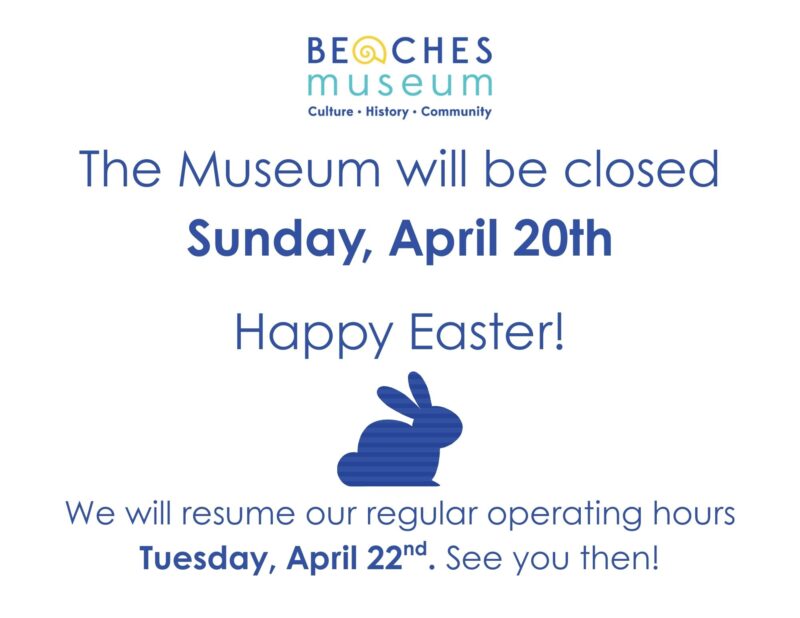
We will resume our regular operating hours Tuesday, April 22nd. See you then!
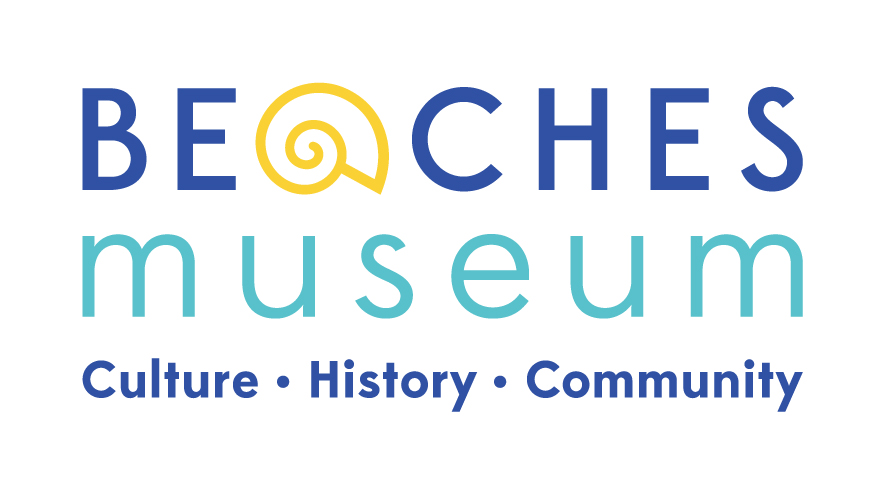

We will resume our regular operating hours Tuesday, April 22nd. See you then!
by contributor Johnny Woodhouse
Manfred Muss has been searching for his biological father all his life.
An only child, Manfred knew his Austrian-born mother, Else, had a romantic encounter with an African American soldier in the early 1950s, but she died without ever telling him the soldier’s name or possible whereabouts.
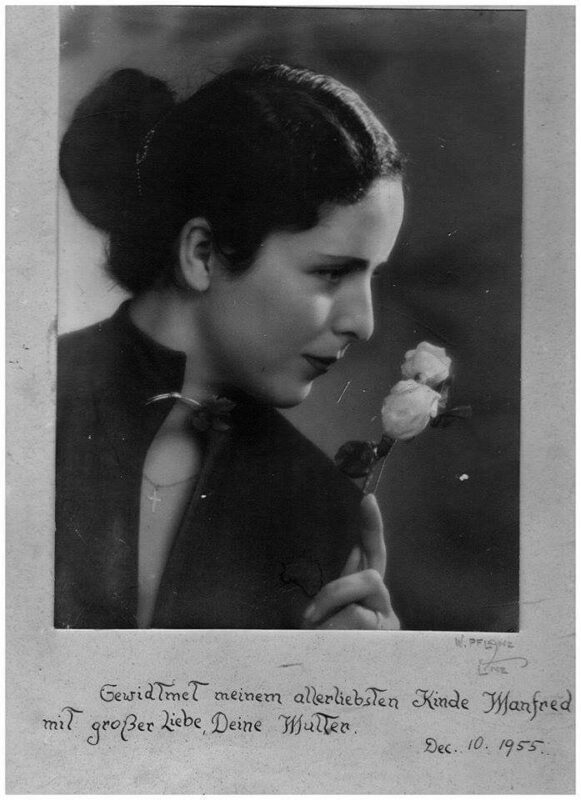
Manfred, now 73, was resigned to the fact that he would never learn his father’s identity until one fortuitous day in 2006 when a picture frame fell off a wall at his home.
From behind the broken frame slide out two handwritten letters, both containing a mysterious Jacksonville Beach street address.
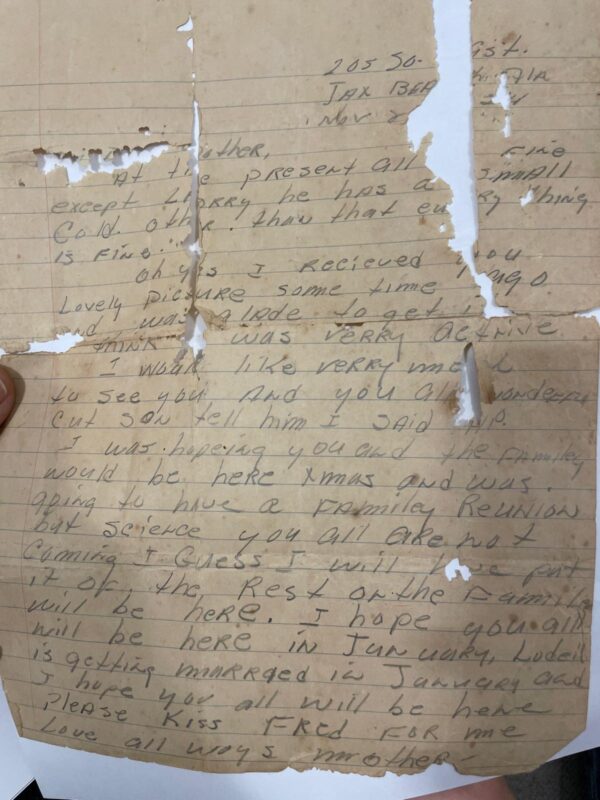
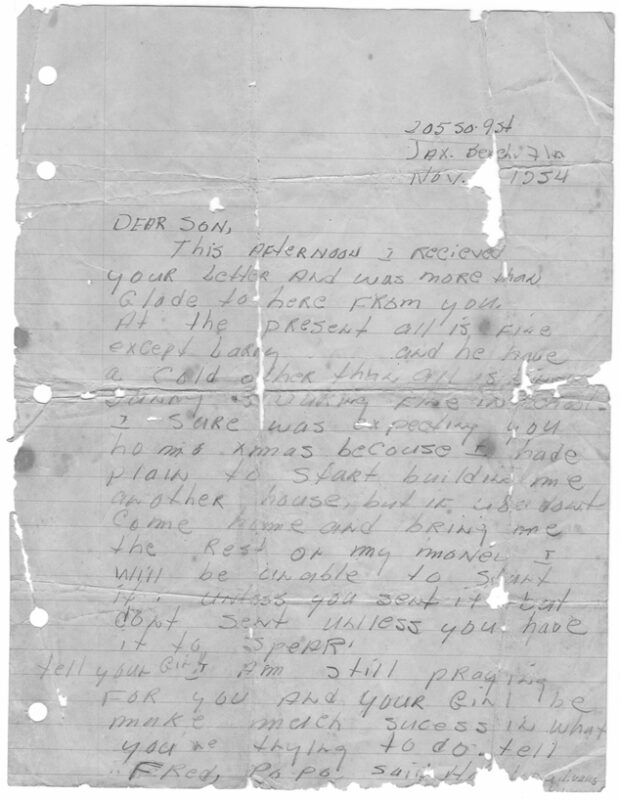
The letters, yellowed by time, were more than 50 years old and written entirely in English. Curious, he asked a friend to help him translate them.
After a few unsuccessful attempts, Manfred gave up and stowed the fragile letters away in an old leather suitcase.
Fast forward to October 2024. Manfred and his 35-year-old daughter, Thali, are having lunch at his home in Milan, Italy, when he casually hands her one of the letters.
Fluent in English, Thali immediately recognized something significant about it. The word “Fred” appears repeatedly. It was a nickname her father had been called as a child.
Prior to the discovery of the letters, the only evidence of her father’s ties to his African American roots was a treasured photograph from his childhood in post-war Linz, Austria.
In the sepia-toned photo, Manfred is depicted as a toddler standing with his arms outstretched as a uniformed African American soldier stands close by. Every time Manfred asked his mother about the photo, she would change the subject or make up stories that only deepened his confusion, Thali said.
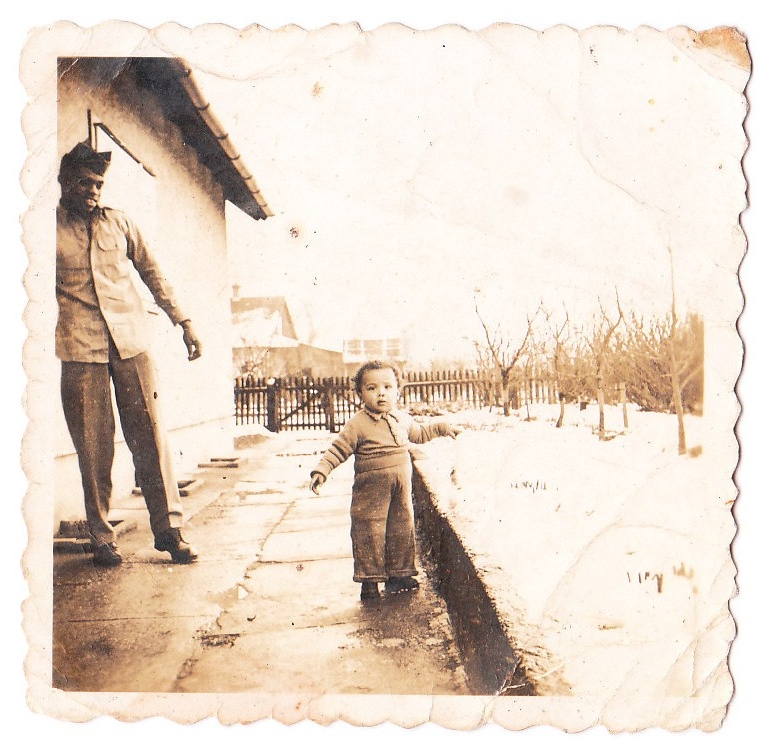
“Her refusal had created a void, an absence my father had spent his entire life trying to fill,” she added.
Putting together the puzzle pieces
Driven by curiosity and the desire to solve the mystery that had weighed on her father for years, Thali decided to take matters into her own hands.
First off, she successfully reconstructed the return address at the top of the letters: 205 South 9th Street, Jacksonville Beach. Next, she posted her findings with a Jacksonville Beach Facebook group.
The responses included suggestions like contacting Search Angels, a nonprofit organization specializing in genealogy, or reaching out to the local property appraiser’s office.
“But the most valuable suggestion came from a Jacksonville Beach resident named Ashley Pardee, who advised us to contact the Beaches Museum, which houses the city’s historical archives and, according to her, has a wonderful team of volunteers,” Thali said.
Before contacting the museum, Thali matched the letter’s return address to census records on Ancestry.com. After some trial and error, she hit the jackpot. The 1950 census listed an African American family with the surname Kirkland residing at 205 South 9th Street, Jacksonville Beach.
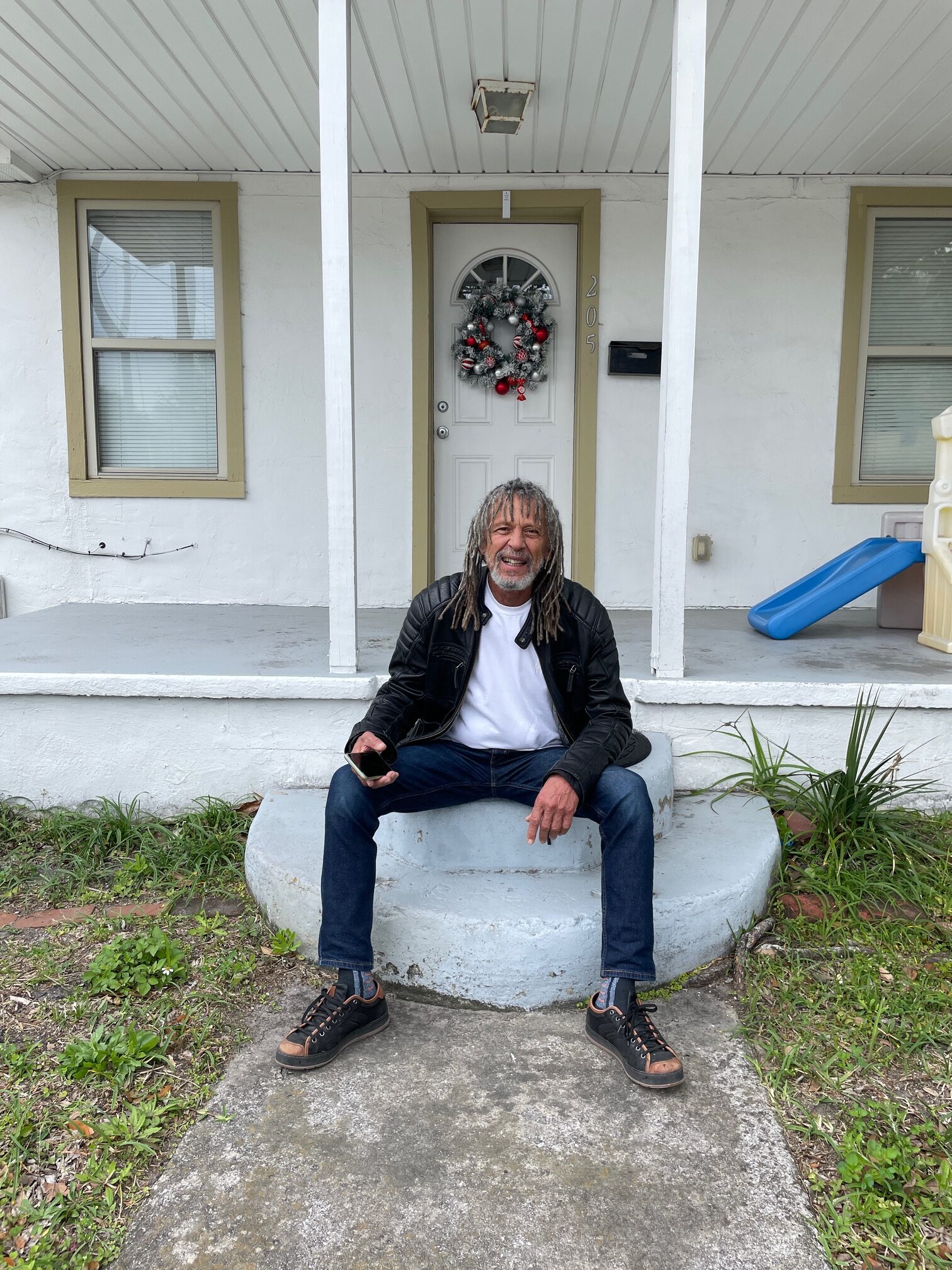
Four of the occupants of the home were mentioned prominently in her father’s letters.
“Every name was a confirmation. The past I had been chasing was no longer an undefined haze. It was taking shape before my eyes,” Thali said.
One name on the census record stood out to her – Junior Kirkland. Could he, in fact, be her father’s biological father? Everything seemed to point in that direction.
Connecting with his overseas kin
After taking Ashley’s advice, Thali sent an email, on behalf of her father, to the Beaches Museum, inquiring about the existence of Junior Kirkland.
After some poking around on the Internet, I was able to find Gus Kirkland Jr.’s obituary and burial details. A 1950 graduate of Stanton High School, he spent more than 20 years in the U.S. Army, rising to the rank of sergeant first class. After his military career, he opened several businesses in Washington D.C., including a soul food restaurant that was frequented by President Obama.
Sadly, Gus. Jr. passed away on April 26, 2013. He was 81.
Knowing her father would never be able to meet his father face to face was a hard pill to swallow. But Thali did the next best thing: she purchased two roundtrip plane tickets from Milan to Jacksonville so her father could meet several members of the Kirkland family still residing in Jacksonville, including an aunt and several first cousins.
On Saturday, March 8, the museum hosted a special Kirkland Family Reunion for Manfred and Thali which drew more than two dozen of his closest relatives.
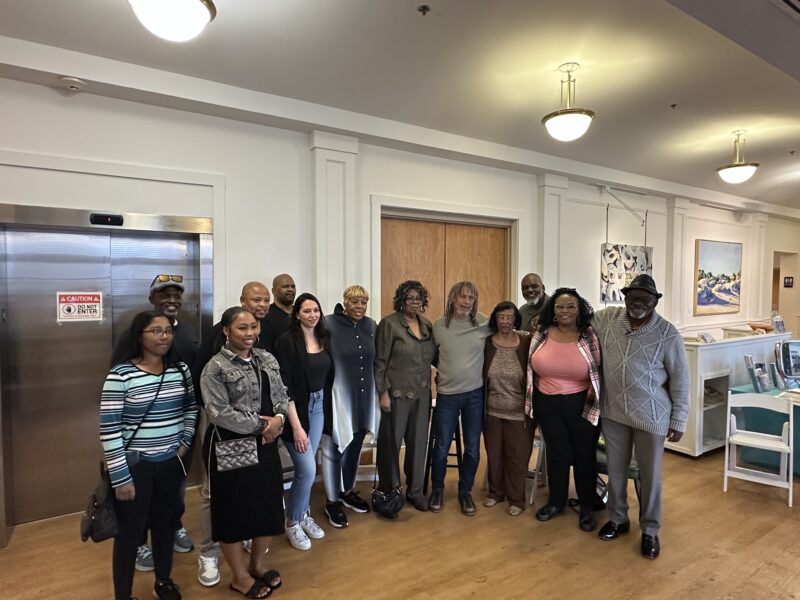
The private event was held in the Museum lobby and the Italian guests of honor were able to connect with other descendants of Lee Kirkland, the former Alabama sharecropper who moved his family to Jacksonville Beach in the early 1940s.
Lee Kirkland was the unofficial caretaker of the former African American cemetery in Jacksonville Beach. After his death in 1960, the city of Jacksonville Beach named the cemetery in his honor.
On Sunday, March 9, Manfred and Thali visited the cemetery where several Kirkland family members are buried, including Manfred’s grandparents Gus Sr. and Effie Kirkland, who proudly displayed photos of Manfred and his mother in their Jacksonville Beach home.
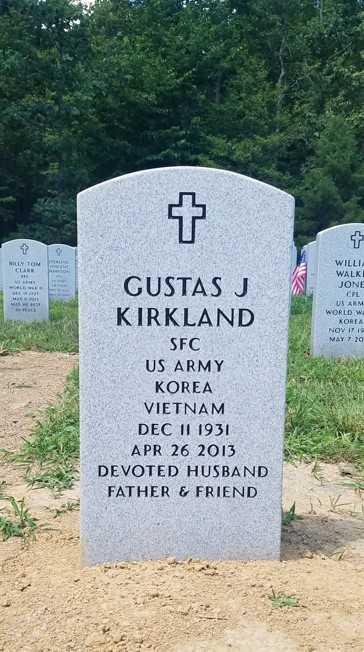
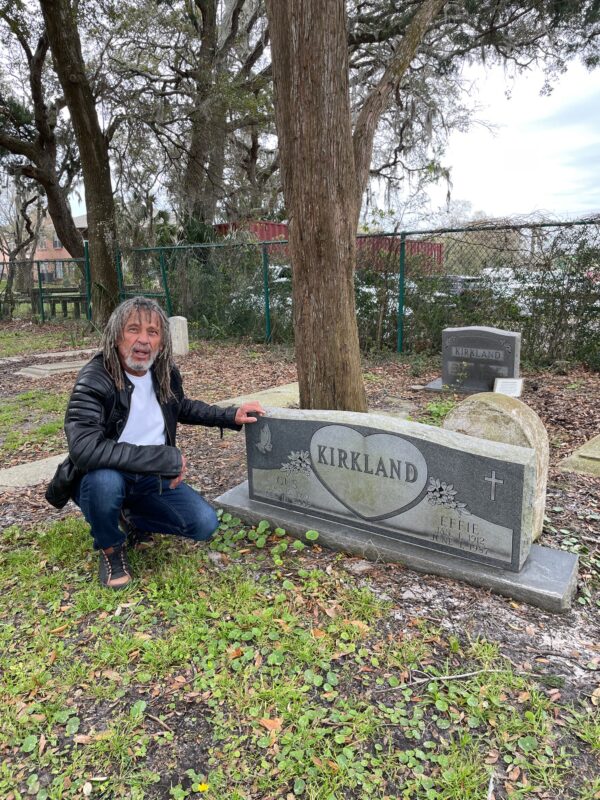
Father and daughter also made pilgrimages to the historic St. Andrew A.M.E. Church where Gus Sr. was a trustee, the Rhoda L. Martin Center on South 4th Street, where Gus Jr. attended grade school and old Stanton High School in downtown Jacksonville.
Before flying home to Milan on March 17, Manfred and Thali made a stopover in Knoxville, Tennessee, to visit John Kirkland, the younger brother of Gus Jr., and a retired U.S. Air Force veteran.
“In hindsight, I understand how important it was for my father to confront this challenge,” said Thali. “Roots are not just a connection to what was but a guide to understanding where we are and where we can go. I am grateful to have found the strength to embark on this journey, too.
“Discovering one’s origins is not just about answering lingering questions, but embracing the choices, losses, and realities of those who came before us,” she added.” My father experienced this journey with hesitation, torn between the desire to know and the fear of not ever knowing. In the end, he experienced a liberation, knowing that every fragment of the past is a part of who we are today.”
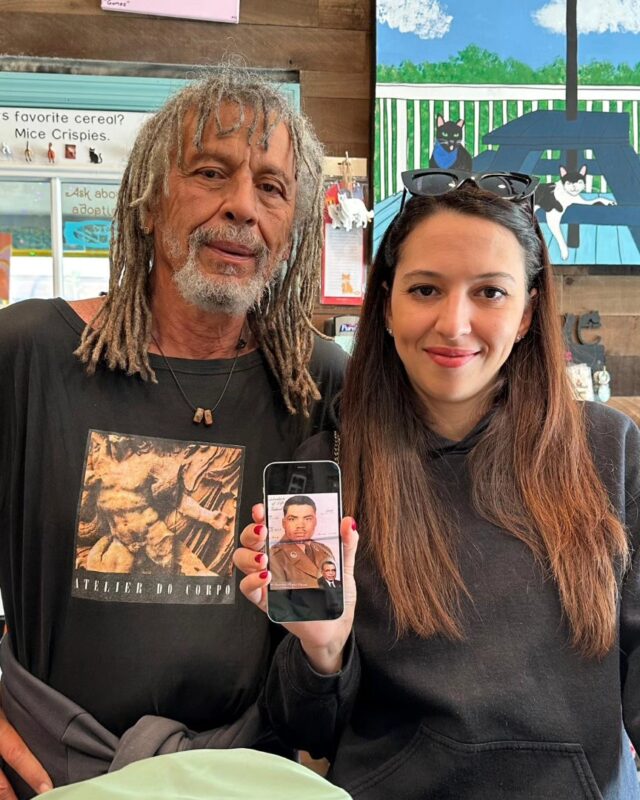
Check out the full lineup of 2025 Boardwalk Talk speakers below and register in advance to reserve your seats!
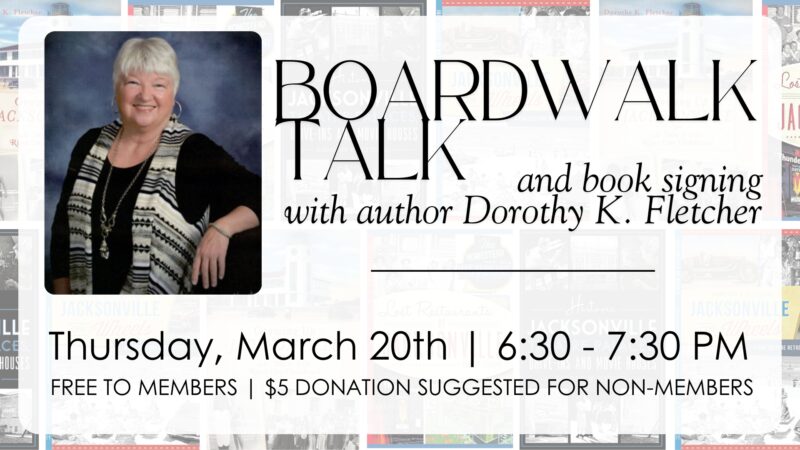
March 20: Special Womens’ History Month Boardwalk Talk and Book Signing with Dorothy K. Fletcher
Thursday, March 20 at 6:30 PM, join us at the Museum for a special Boardwalk Talk and book signing with this month’s featured author, Dorothy K. Fletcher.
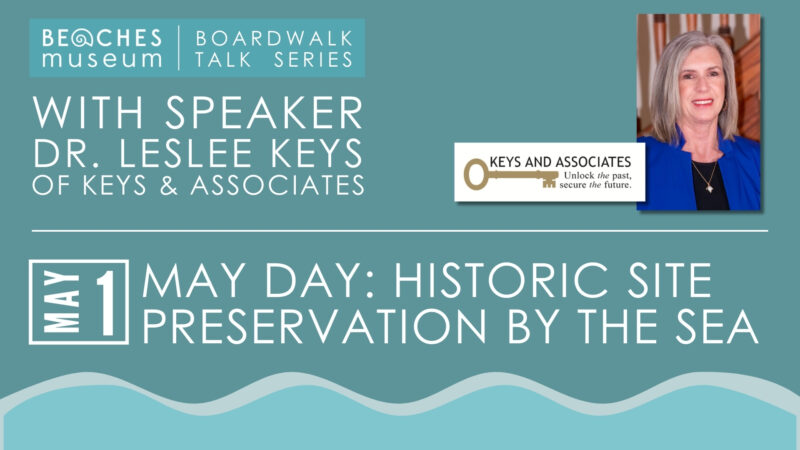
May 1: May Day Boardwalk Talk with Seaside Historic Preservation Expert Leslee Keys
Thursday, May 1 at 6:30 PM, join us for a special Boardwalk Talk with historic preservation expert Dr. Leslee Keys on the unique challenges coastal sites present for historic preservationists and what can be done to enhance the resilience of a coastal community’s heritage sites.
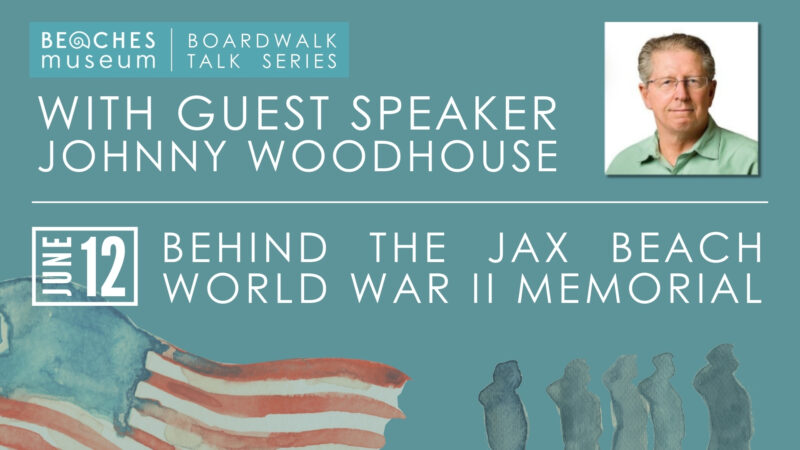
June 12: Behind the Jacksonville Beach World War II Memorial with Journalist Johnny Woodhouse
Thursday, June 13 at 6:30 PM, join us for a special Boardwalk Talk which will explore Johnny Woodhouse’s research into the 22 fallen WWII veterans of Jacksonville Beach remembered in Oceanfront Park’s World War II memorial.
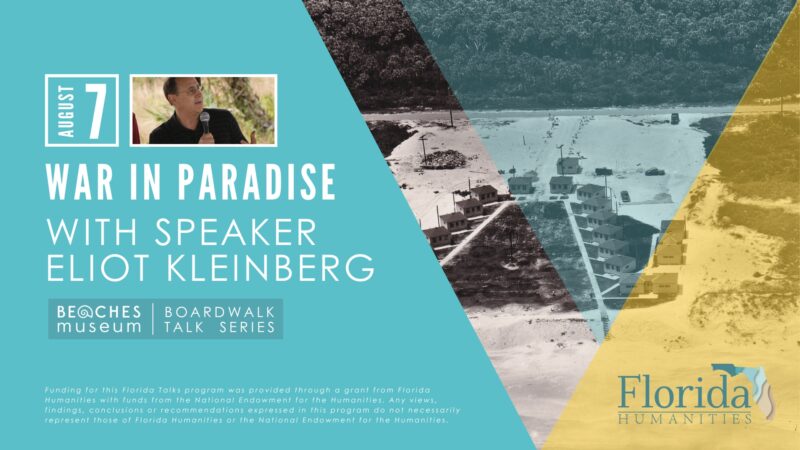
August 7: War in Paradise – World War II in Florida with Eliot Kleinberg
Thursday, August 7 at 6:30 PM, join us at the Museum for a special Boardwalk Talk on World War II in Florida with speaker Eliot Kleinberg. Make sure to take a look at our current exhibit for a look at more war history!
Funding for this program was provided through a grant from Florida Humanities with funds from the National Endowment for the Humanities. Any views, findings, conclusions or recommendations expressed in this program do not necessarily represent those of Florida Humanities or the National Endowment for the Humanities
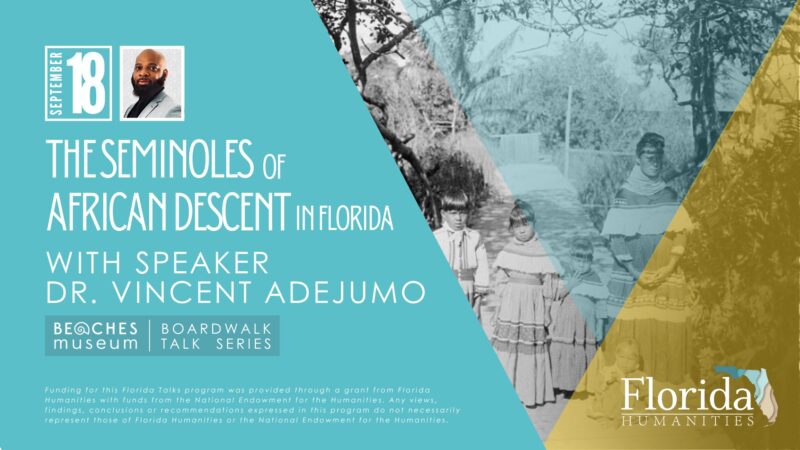
September 18: The Seminoles of African Descent in Florida with Dr. Vincent Adejumo
Thursday, September 18 at 6:30 PM, join us at the Museum for a special Boardwalk Talk on the Seminoles of African Descent with University of Florida lecturer Dr. Vincent Adejumo.
Funding for this program was provided through a grant from Florida Humanities with funds from the National Endowment for the Humanities. Any views, findings, conclusions or recommendations expressed in this program do not necessarily represent those of Florida Humanities or the National Endowment for the Humanities
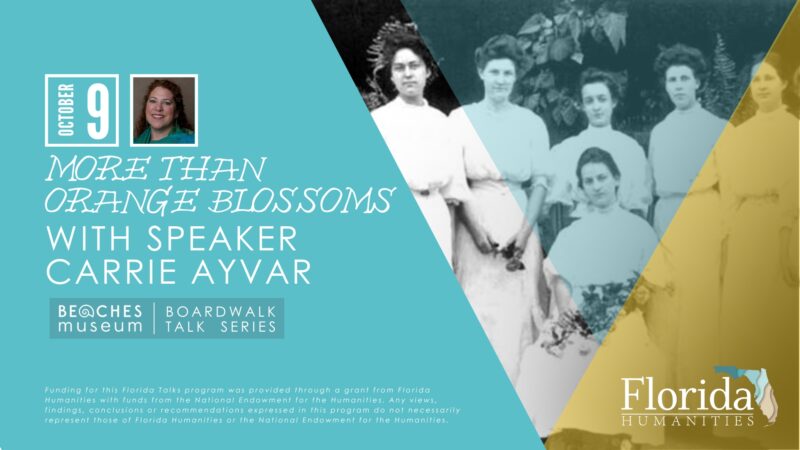
October 9: More than Orange Blossoms – Feisty, Fabulous Females of Florida with Carrie Ayvar
Thursday, October 9 at 6:30 PM, join us at the Museum for a special Boardwalk Talk by Carrie Sue Ayvar celebrating women’s’ history in Florida!
Funding for this program was provided through a grant from Florida Humanities with funds from the National Endowment for the Humanities. Any views, findings, conclusions or recommendations expressed in this program do not necessarily represent those of Florida Humanities or the National Endowment for the Humanities
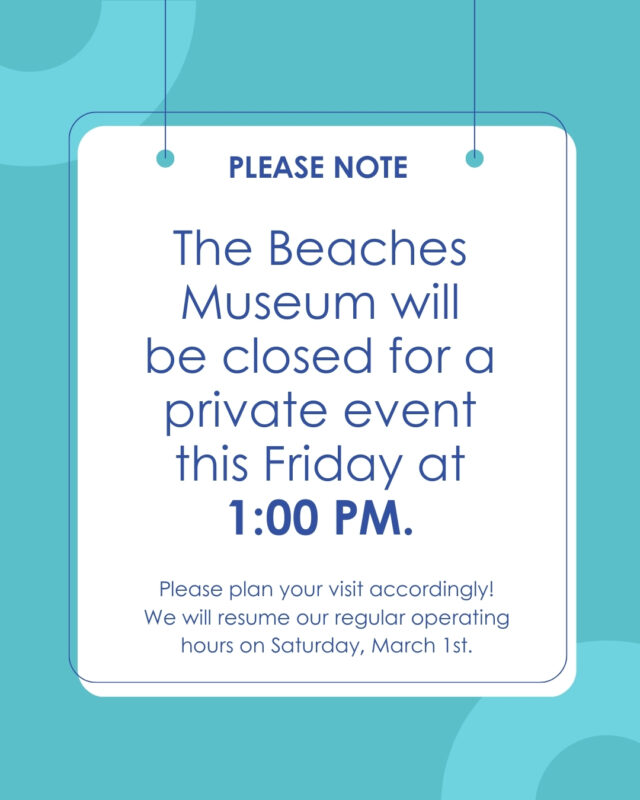
The Beaches Museum will be closed for a private event this Friday at 1:00 PM. Please plan your visits accordingly! We will resume regular operating hours on Saturday, March 1st.
By Johnny Woodhouse
More than a dozen former Fletcher High School football players have made their way to the National Football League (NFL), including current Fletcher head football coach Ciatrick Fason (Minnesota Vikings).
But none had the staying power of 1969 Fletcher graduate Noah Dale Jackson.
A seventh-round NFL draft pick in 1974, Jackson played for the Chicago Bears for nine consecutive seasons from 1975-1983 and completed his 10-year NFL career with the Tampa Bay Buccaneers in 1984.
A Jacksonville Beach native, Jackson broke down color barriers in high school and college.
In 1966, he became the first African American to play football at Fletcher and was one of three former Fletcher football players to make an NFL roster in the 1970s.
“Noah was a stud. We bonded and I always admired him not only for his athleticism, but more so for his handling of racial prejudice and mistreatment while representing Fletcher High,” said Jacksonville attorney Bob Parrish, a 1969 Fletcher graduate and a member of the NFL’s New York Jets in 1973.
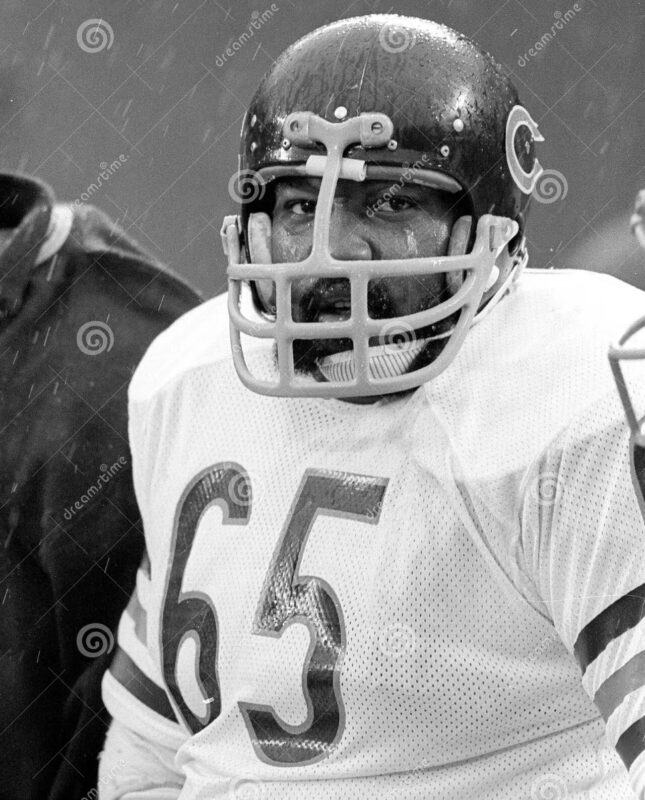
Grew up next to historic grammar school
Born April 14, 1951, in Jacksonville Beach, Jackson was the second son of George and Lottie Mae Jackson. He grew up in a house on the corner of 4th Avenue South and South 11th Street, a stone’s throw from the Jacksonville Beach School for Colored Children (School #144), which was formerly located at what is now Jacksonville Beach Elementary School.
“We lived so close to the school that it was like we lived right on campus,” said Issac Green, a Jacksonville Beach native who lived across the street from Jackson on South 11st Street. “One weekend, Noah and I snuck into the school and removed all the paddles and straps from the teacher’s desks.”
Lifelong best friends, Green and Jackson started working as caddies at the Jacksonville Beach golf course when they were 10 or 11 years old. “The course was right behind our street. During the summer, we shagged golf balls and caddied at the country club in Ponte Vedra Beach,” Green recalled. “We also sold copies of The Beaches Leader newspaper, back when it was only 10 cents.”
In the fall of 1965, Jackson and more than 50 of his School #144 classmates integrated into Fletcher, which had just opened its new high school campus off Seagate Avenue in Neptune Beach.
“All of us felt strange and maybe a little scared. We thought we wouldn’t be accepted by the white students,” Jackson recalled in 1969.
“But before that first day was over, we saw we were wrong. We got the same treatment as everybody else.”
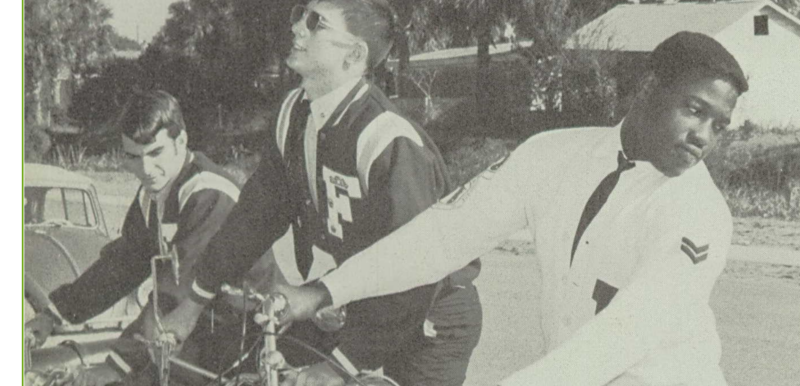
Running the racial gauntlet
Jack Taylor, Fletcher’s legendary football coach from 1959-1974, first set eyes on Jackson in 1964, while scouting a summer youth football league. By the time Jackson was eligible to play football at Fletcher, he was already a man among boys. “He deadlifted more weight than we stocked. I had to buy a longer bar and more weights just to see what he could do,” Taylor said in 1992. “He did all that we had and bent my new bar.”
Jackson was one of more than a dozen African American students who came out for football trials in 1966, but the only one to make the varsity squad. “Coach Taylor told me I’d have a hard time because of my race, and he warned me that I should expect name calling and jeers from opposing teams,” Jackson recalled in 1969. “He said I must be ready for it and not let it bother me.”
Despite the turbulent times, Jackson thrived in high school, taking classes from algebra to typing. He played football and basketball for three years and became the first Black athlete to be inducted into Fletcher’s exclusive lettermen’s club. As a senior, he was crowned homecoming king, elected co-captain of the football team, and voted as the most valuable player.
As a junior, Jackson and fellow Fletcher teammate Tom Sullivan became the first African Americans to be named to The Jacksonville Journal’s All-County Football Team. Sullivan, who graduated from Fletcher in 1968, went on to help crack the football color barrier at the University of Miami and played seven seasons in the NFL, including six with the Philadelphia Eagles.
Green said a lot of Jackson’s success at Fletcher, both on and off the field, can be attributed to his mother, who volunteered for years at a soup kitchen at Thomas Chapel Church of God by Faith in Jacksonville Beach, where a building, the Jackson McNeil Center, is named in her honor.
“She always told him to stay in school and get an education. She believed that was more important than football,” said Green, who remembers accompanying Jackson to a teenager dance at the Jacksonville Beach Flag Pavilion.
“The only reason they let us in was because everyone knew Noah Jackson.”
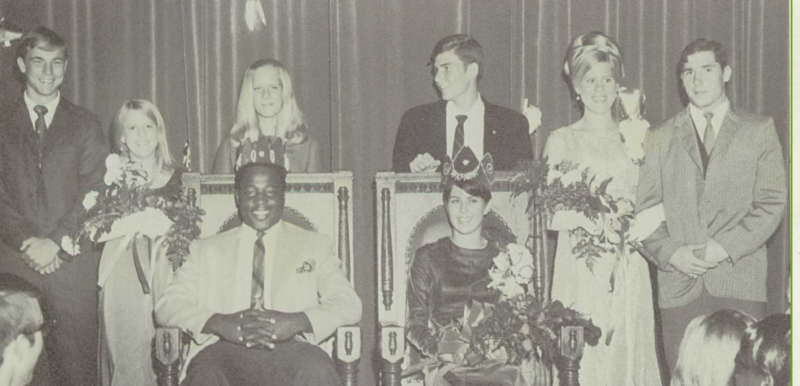
Adapting to the next level
In 1969, many southern colleges were just starting to desegregate their sports teams. The year before, the University of Tampa hired progressive head football coach Fran Curci, a former University of Miami assistant. The private college encouraged Curci to break the color line and Jackson was one of his first African American recruits.
During Jackson’s first year in Tampa, the Spartans were ranked No. 1 in the nation among small-college teams.
In November 1969, Tampa (8-1) hosted the Florida A&M Rattlers (7-1) in front of a sold-out crowd at Tampa Stadium. The landmark game was the first between an all-Black college from Florida and an overwhelmingly white one.
“It still has meaning, all these years later,’” Curci said in 2019. “I think we all knew we were part of something very special and very historic.”
Jackson played three seasons for the Spartans but gave up his final year of college eligibility to sign a free-agent contract with the Canadian Football League’s Toronto Argonauts on March 8, 1972.
Jackson suited up for 44 games with the Argonauts, playing both left guard and left tackle. In 1974, his last year in the CFL, he was selected by the Football Reporters of Canada to the Eastern Conference All-Star Team. “Up there, it’s a job and everybody is fighting for a job in order to live,” he told The Beaches Leader in February 1976. “When it becomes a way to earn a living, there is an entirely different light on the game.”
A defensive player in high school and college, Jackson made the switch to offense in the pros, where he felt he could enjoy a much longer career. “The body of an offensive lineman who takes care of himself can last until he’s 35 or older,” he said. “A defensive player is lucky if he can make it to 30. Most of those guys have had at least one knee operation and other injuries and their bodies won’t last as long. I hope to play until I’m 35 and I think I can do it on offense.”
Jackson’s mother never attended any of her son’s football games, believing that if she stayed home and prayed, he would never be injured. For the most part, her prayers were answered.
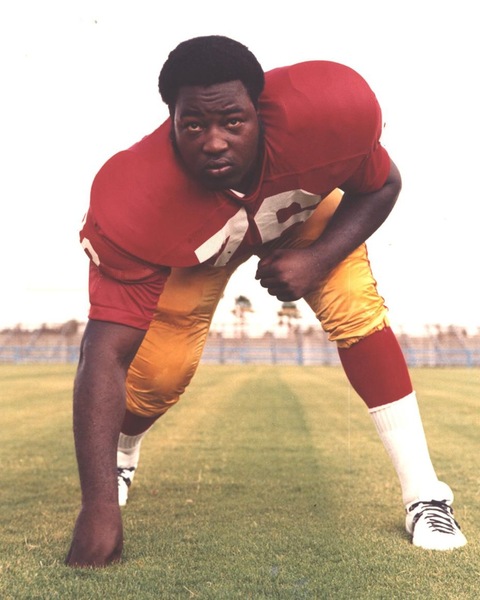
Making the grade as a pro
In 1974, Jackson was drafted by both the NFL’s Baltimore Colts and the Florida Blazers of the upstart World Football League. Jackson never signed with either club, preferring to play out his third-year option with the Argonauts, who failed to make the 1974 CFL playoffs. On Jan. 28, 1975, the Bears traded a future draft pick to the Colts for the signing rights to Jackson, who officially joined the Bears on March 25, 1975.
Chicago won only four of its 14 games in 1975 and finished third in its division. One of its bright spots that season was rookie running back Walter Payton, a first-round draft pick from a historically Black college in Mississippi who rushed for 679 yards and seven touchdowns. Four other first-year starters for the Bears, including Jackson, were named to Football Digest magazine’s 1975 Rookie All-Star Team.
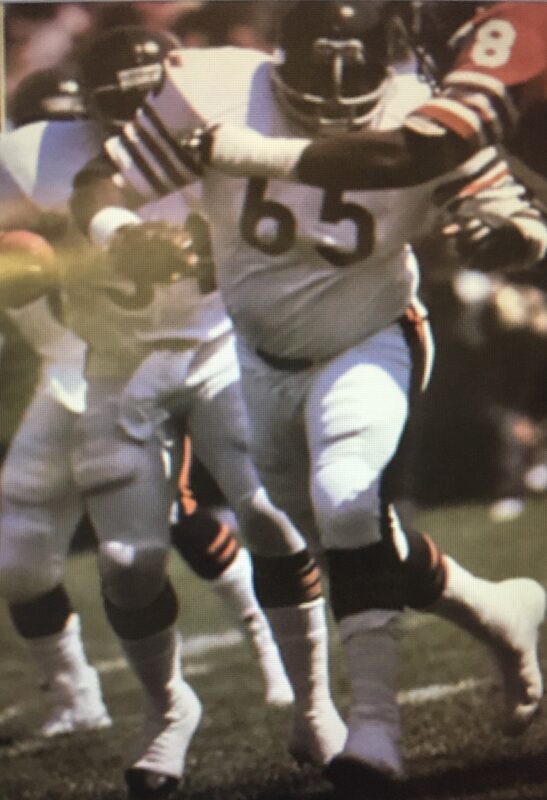
Green said one of the first big-ticket items Jackson purchased was a peach-colored Cadillac Eldorado. “We drove down to Daytona Beach in it to watch the Florida Classic,” said Green, referring to the annual college football game between Bethune-Cookman University and Florida A&M.
Jackson also set aside money from his pro contracts to pay for several additions on his mother’s home in Jacksonville Beach, according to his younger sister, Carol Jackson Kenny, a 1970 Fletcher graduate. At the end of the 1977 season, when Payton broke O. J. Simpson’s single-game rushing record, Green said Payton gave Jackson and the rest of his offensive linemen gold pocket watches.
“Once while I was living in Atlanta, Noah introduced me to Payton when the Bears scrimmaged the Falcons,” he said.
During his nine years with the Chicago Bears, Jackson helped pave the way for seven of Payton’s 1,000-yard rushing campaigns. A durable offensive lineman, he started 70 of 74 games during his first five seasons, including a streak of 50 consecutive starts from 1976 to 1979.
“He was light on his feet and great on sweeps,” former Chicago Bears head coach Jack Pardee (1975–1977) told The Beaches Leader in 1992. “He was a good run blocker and at the time we were a good running team. Our brand of football fit him to a tee.”
In 1984, Jackson was cut by the Bears in training camp. He was quickly picked up as a free agent by the Buccaneers and appeared in six games that year, including the season opener against the Bears, a 34–14 loss at Soldier Field.
After the cheering stopped
Before his playing days were over, Jackson settled down and started a family in Lake Forest, Illinois, home to the Bears training facility and one of the first African American enclaves on Chicago’s North Shore. The union produced two daughters, Noelle, in 1980, and Camille in 1983.
“Lake Forest was a stop on the Underground Railroad,” said Noelle Jackson. “When I grew up there, we owned the smallest house on the block. Golf was my father’s passion. I can’t tell you how many times I picked up golf balls for him in the backyard.”
Noelle Jackson said her parents divorced in the early 1990s. By then, her father had been out of pro football for more than six years and was employed as a physical education instructor and a counselor at the Chicago Center for New Direction, a community house for wards of the state. He also spent time as a licensed electrician.
As he got older, Jackson shuttled back and forth between Chicago and Florida, always serving as an integral part of his daughter’s lives. In July 2004, he attended his first-ever Fletcher class reunion in Jacksonville Beach. “That was the first time many of us had seen Noah since we graduated,” recalled 1969 classmate Kathy Marvin in 2004. Added Taylor, Jackson’s former high school coach: “It was a complete surprise. It made the evening.”
Jackson sat at Taylor’s table during the 35th class reunion dinner, and said his old coach, then 73, hadn’t changed much. “His heart was still the same,” Jackson recalled. “The bond between coach and me was one of a father and son. He gave me a good work ethic. That’s something that stayed with me all the way through my pro career.”
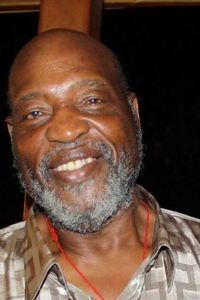
Whenever Jackson was in town, Green said you could always find him on the golf course. “Noah was a good golfer. We played in tournaments together. He could easily shoot between 79 and 82,” Green added.
When Green was a deacon at Titus Harvest Dome Spectrum Church, he and Jackson and former Harvest Dome pastor Rodney “R.J.” Washington Sr., who lost his battle with cancer in 2018, often played as a threesome.
Not long after that, Jackson’s own health started to fail. He developed lymphedema in one leg to the point where it became severely infected. In 2021, he was diagnosed with kidney disease and was in and out of Jacksonville hospitals for the next two years.
A proud man who once had the strength to hold off NFL Hall of Fame defensive linemen like Alan Page of the Minnesota Vikings, Jackson told his daughter in his final days, “I’ve never been down and not been able to get back up.”
Noah Dale Jackson, who was inducted into the University of Tampa Sports Hall of Fame in 1985 and the Jacksonville Sports Hall of Fame in 1987, passed away peacefully on Nov. 20, 2023, surrounded by family and friends at Baptist Medical Center Jacksonville. He was 72.
He is survived by two siblings, three daughters and four grandchildren. He was laid to rest at Beaches Memorial Park in Atlantic Beach.
“Noah will always be remembered for his bigger-than-life personality,” said his daughter, Noelle. “His memory will live on in the hearts of all those who loved him.”

The Beaches Museum is pleased to announce the 2025 Spring Chapel Concert Series with a fresh lineup of incredible talent!
Shows include:
Verlon Thompson: Tuesday, February 4 at 7:00 p.m.
Mike Younger Trio: Wednesday, March 5 at 7:00 p.m.
Yates McKendree: Thursday, April 3 at 7:00 p.m.
MillaJohn’s BlueSoul: Thursday, May 8 at 7:00 p.m.
Individual concert tickets are $30 and a season pass for all 4 is $100
Tickets include light refreshments and a donation bar in the historic Oesterreicher-McCormick Cabin.
Doors open at 6:30 p.m. and concerts begin at 7:00 p.m.
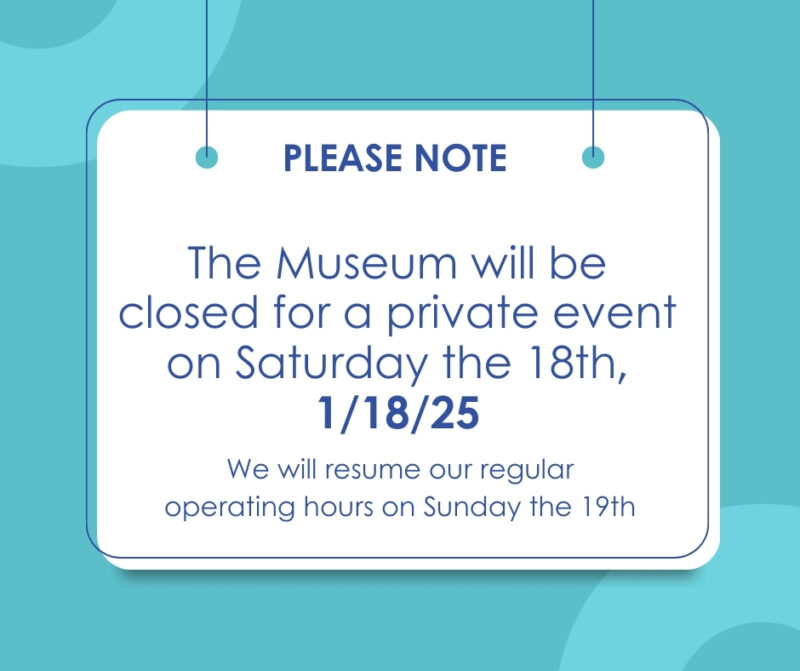
Please note that the Museum will be closed on Saturday, January 18th for a private event. Regular operating hours resume the following Sunday at noon. Please plan your visits accordingly.
The Beaches Museum will be closed for Christmas Eve and Christmas Day (Tuesday, December 24th and Wednesday, December 25th) as well as New Year’s Eve and New Year’s Day (Tuesday, December 31st and Wednesday, January 1st). Please plan your holiday visits accordingly!


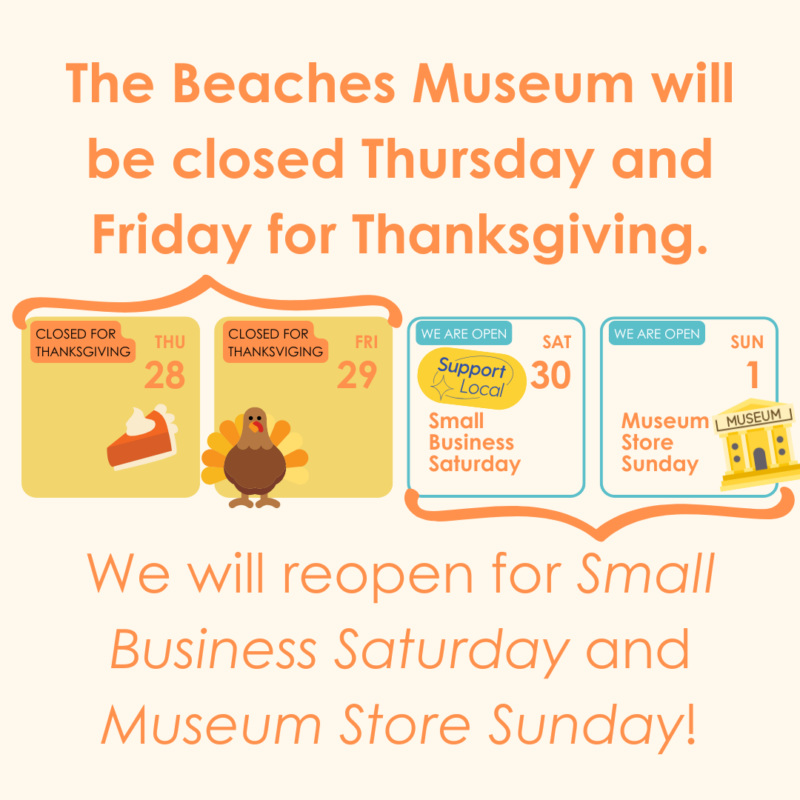
The Beaches Museum will be closed for Thanksgiving this Thursday and Friday, but we will reopen for regular operating hours on Saturday the 30th and Sunday the 1st–just in time for Small Business Saturday and Museum Store Sunday!
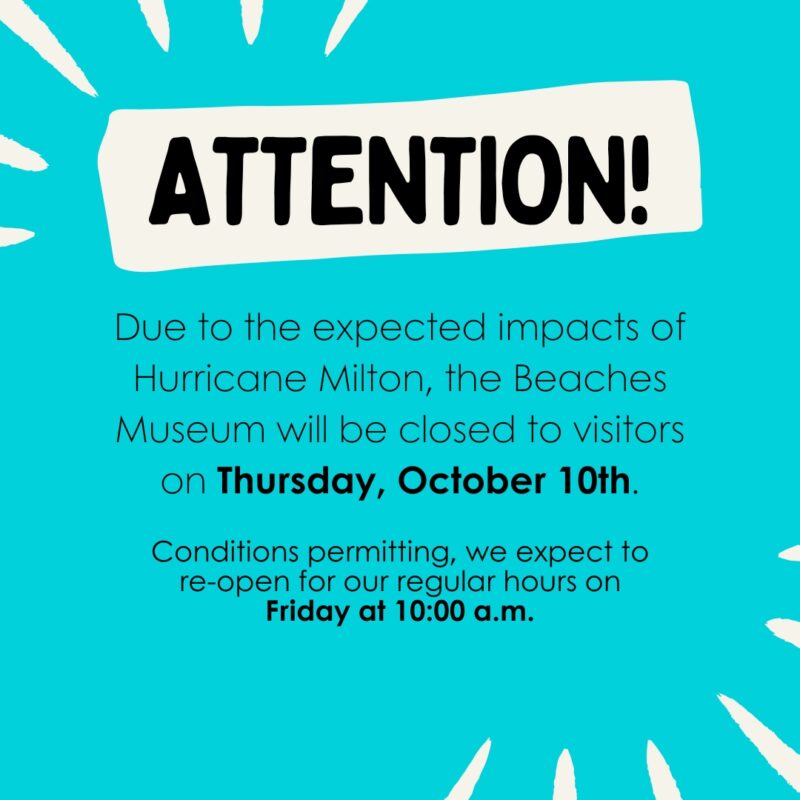
Due to the expected impacts of Hurricane Milton, the Beaches Museum will be closed to visitors on Thursday, October 10th.
Conditions permitting, we expect to re-open for our regular hours on Friday at 10:00 a.m.